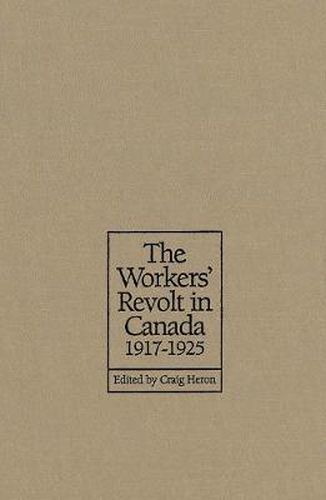Readings Newsletter
Become a Readings Member to make your shopping experience even easier.
Sign in or sign up for free!
You’re not far away from qualifying for FREE standard shipping within Australia
You’ve qualified for FREE standard shipping within Australia
The cart is loading…






Canadians often consider the Winnipeg General Strike of 1919 to be the defining event in working-class history after the First World War. This book, the collaboration of nine labour historians, shows that the unrest was both more diverse and more widespread across the country than is generally believed.
The authors clarify what happened in working-class Canada at the end of the war and situate ‘the workers’ revolt’ within the larger structure of Canadian social, economic, and political history. They argue that, despite a national pattern, the upsurge of protest took different courses and faced different obstacles in each region of the country. Their essays shed light on the extent of the revolt nationally while retaining a sensitivity to regional distinctiveness.
Drawing on the approaches of social history, this study moves beyond the history of the strike and union organization that characterizes conventional labour history, and re-examines what was once called the ‘western revolt.’ The Workers’ Revolt in Canada combines fresh archival research with a great body of secondary literature on the subject to produce a compelling new synthesis, which will be of great use to teachers and of interest to economists, sociologists, and historians.
$9.00 standard shipping within Australia
FREE standard shipping within Australia for orders over $100.00
Express & International shipping calculated at checkout
Canadians often consider the Winnipeg General Strike of 1919 to be the defining event in working-class history after the First World War. This book, the collaboration of nine labour historians, shows that the unrest was both more diverse and more widespread across the country than is generally believed.
The authors clarify what happened in working-class Canada at the end of the war and situate ‘the workers’ revolt’ within the larger structure of Canadian social, economic, and political history. They argue that, despite a national pattern, the upsurge of protest took different courses and faced different obstacles in each region of the country. Their essays shed light on the extent of the revolt nationally while retaining a sensitivity to regional distinctiveness.
Drawing on the approaches of social history, this study moves beyond the history of the strike and union organization that characterizes conventional labour history, and re-examines what was once called the ‘western revolt.’ The Workers’ Revolt in Canada combines fresh archival research with a great body of secondary literature on the subject to produce a compelling new synthesis, which will be of great use to teachers and of interest to economists, sociologists, and historians.